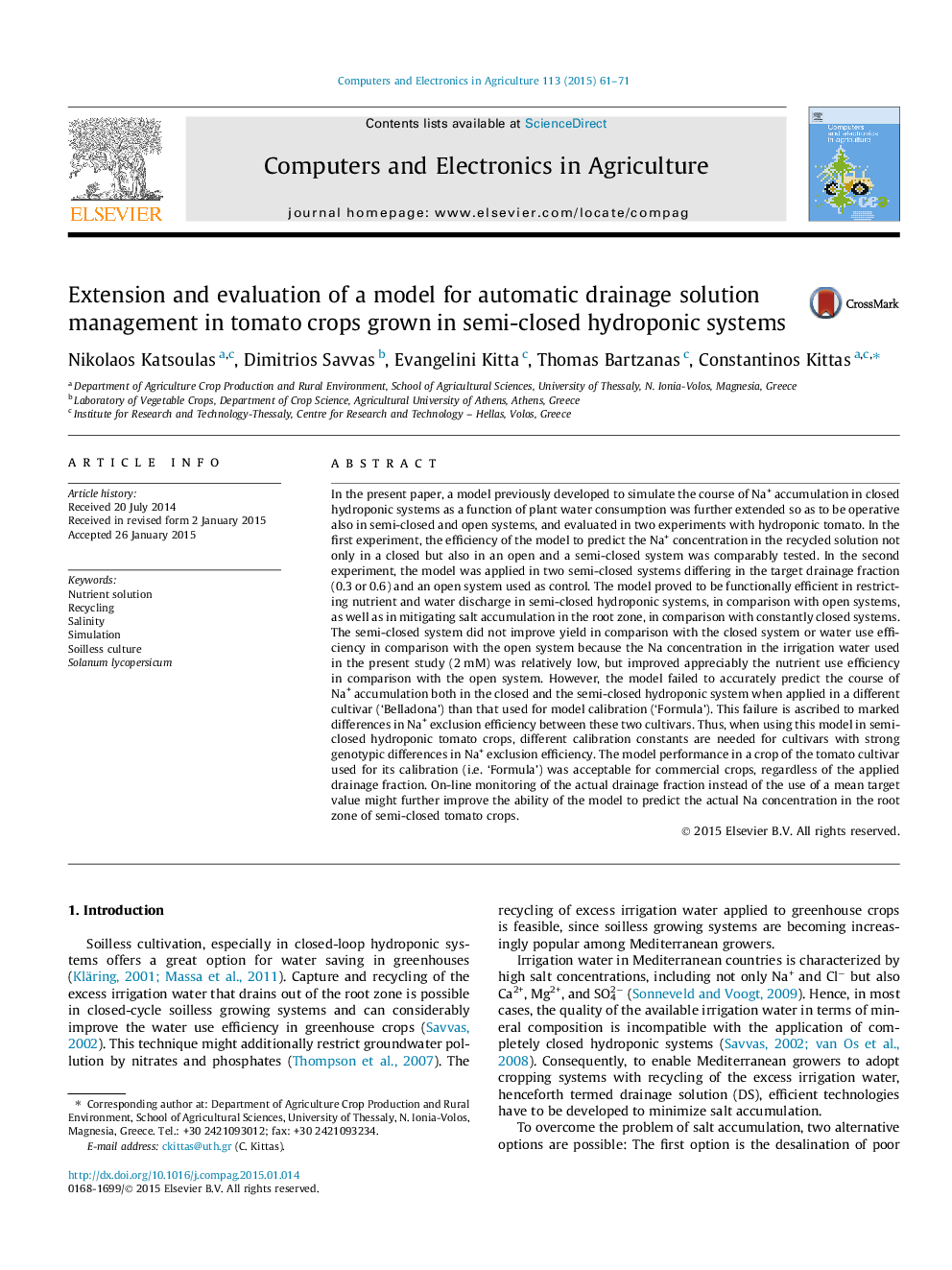| کد مقاله | کد نشریه | سال انتشار | مقاله انگلیسی | نسخه تمام متن |
|---|---|---|---|---|
| 6540788 | 158867 | 2015 | 11 صفحه PDF | دانلود رایگان |
عنوان انگلیسی مقاله ISI
Extension and evaluation of a model for automatic drainage solution management in tomato crops grown in semi-closed hydroponic systems
ترجمه فارسی عنوان
گسترش و ارزیابی یک مدل برای مدیریت راه حل اتوماتیک زهکشی در محصولات گوجه فرنگی تولید شده در سیستم های هیدروپونیک نیمه بسته
دانلود مقاله + سفارش ترجمه
دانلود مقاله ISI انگلیسی
رایگان برای ایرانیان
کلمات کلیدی
موضوعات مرتبط
مهندسی و علوم پایه
مهندسی کامپیوتر
نرم افزارهای علوم کامپیوتر
چکیده انگلیسی
In the present paper, a model previously developed to simulate the course of Na+ accumulation in closed hydroponic systems as a function of plant water consumption was further extended so as to be operative also in semi-closed and open systems, and evaluated in two experiments with hydroponic tomato. In the first experiment, the efficiency of the model to predict the Na+ concentration in the recycled solution not only in a closed but also in an open and a semi-closed system was comparably tested. In the second experiment, the model was applied in two semi-closed systems differing in the target drainage fraction (0.3 or 0.6) and an open system used as control. The model proved to be functionally efficient in restricting nutrient and water discharge in semi-closed hydroponic systems, in comparison with open systems, as well as in mitigating salt accumulation in the root zone, in comparison with constantly closed systems. The semi-closed system did not improve yield in comparison with the closed system or water use efficiency in comparison with the open system because the Na concentration in the irrigation water used in the present study (2Â mM) was relatively low, but improved appreciably the nutrient use efficiency in comparison with the open system. However, the model failed to accurately predict the course of Na+ accumulation both in the closed and the semi-closed hydroponic system when applied in a different cultivar ('Belladona') than that used for model calibration ('Formula'). This failure is ascribed to marked differences in Na+ exclusion efficiency between these two cultivars. Thus, when using this model in semi-closed hydroponic tomato crops, different calibration constants are needed for cultivars with strong genotypic differences in Na+ exclusion efficiency. The model performance in a crop of the tomato cultivar used for its calibration (i.e. 'Formula') was acceptable for commercial crops, regardless of the applied drainage fraction. On-line monitoring of the actual drainage fraction instead of the use of a mean target value might further improve the ability of the model to predict the actual Na concentration in the root zone of semi-closed tomato crops.
ناشر
Database: Elsevier - ScienceDirect (ساینس دایرکت)
Journal: Computers and Electronics in Agriculture - Volume 113, April 2015, Pages 61-71
Journal: Computers and Electronics in Agriculture - Volume 113, April 2015, Pages 61-71
نویسندگان
Nikolaos Katsoulas, Dimitrios Savvas, Evangelini Kitta, Thomas Bartzanas, Constantinos Kittas,
